East Credit Dental offers a wide variety of services. Please browse below to learn more.
- Root Canal Treatment
- Restorative Treatment
- CEREC
- Veneers
- No Impression Nightguards
- No Impression Essex
- Laughing Gas
- Implants
- Teeth Whitening
- Hygienic Services
- Emergency Services
- No Impression Sportsguard
- No Impression Retainers
- Digital X-Rays
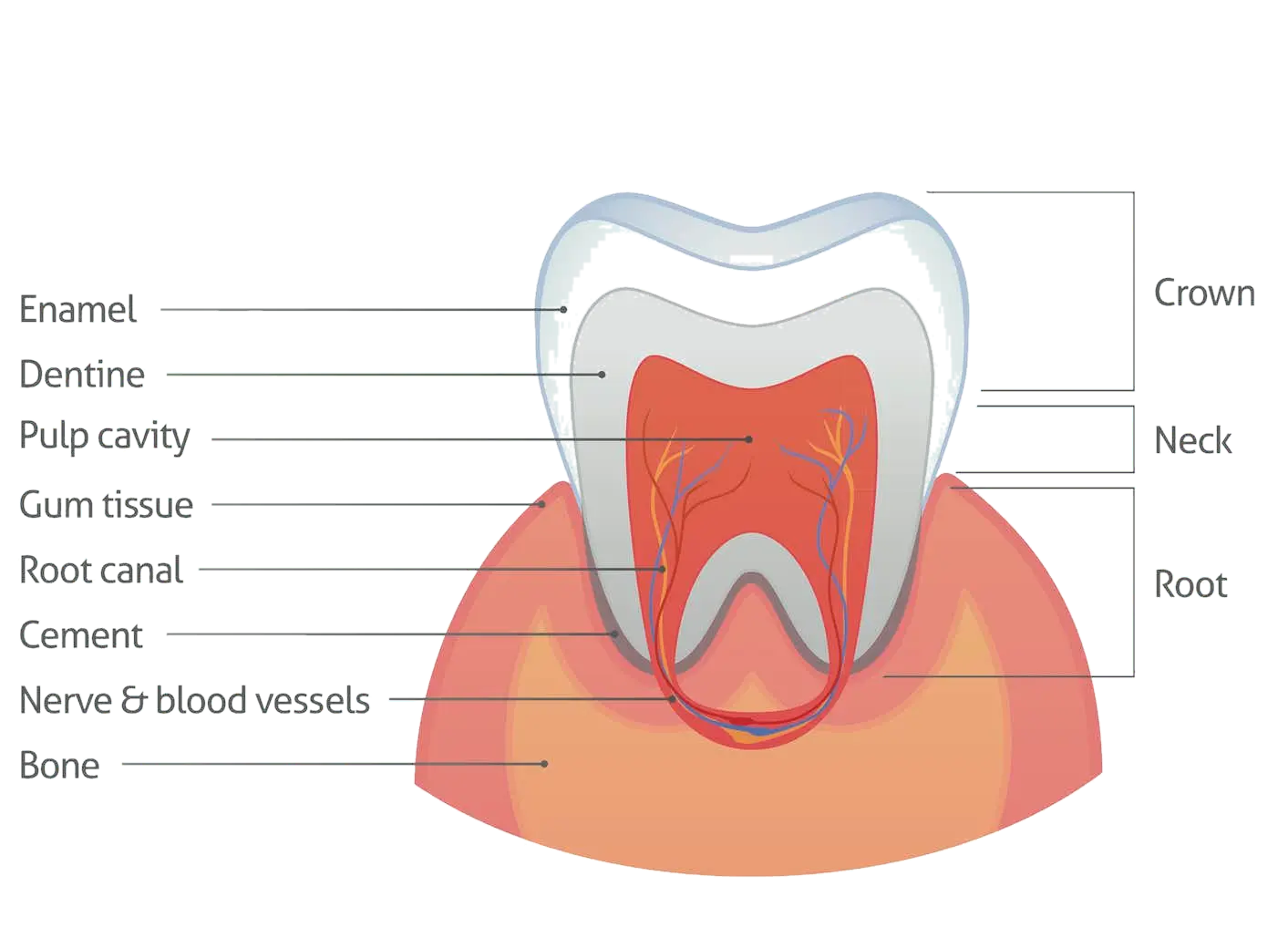
What is a Root Canal?
Teeth are made up of three layers:
- Enamel
- Dentin
- Cementum
There is a space inside the hard layer of each tooth. It is called the root canal system and it is filled with soft dental pulp. This pulp is made up of nerves and blood vessels that help the tooth grow and develop. Once a tooth is fully grown, it can survive without a pulp. If the pulp of the tooth becomes infected, then a root canal (or endodontic treatment) is needed. When this is done, the pulp is removed.
When do You Need a Root Canal?
The pulp inside the tooth can be damaged by cracks in the tooth, deep cavities, old fillings that leak and allow bacteria underneath them, or trauma due to accidents. Germs (or bacteria) can get into the tooth and can lead to infected tooth pulp. This may cause pain and/or swelling. Sometimes a pulp becomes infected or dies, but does not cause any pain. Your dentist may notice:
- Changes in the color of your tooth
- Change in your gums or
- Changes picked up by a dental x-ray
Sometimes, if a great deal of dental work is needed, your dentist can tell you from an examination and an x-ray that the pulp of the tooth is most likely not going to survive and a root canal treatment may be necessary.
Root Canal Dentist in Mississauga
During your regular check-up, your dentist checks for infection and damage to teeth even though you may not notice any signs of tooth trouble. If trouble is spotted and you need a root canal your dentist may do it, or refer you to a specialist. Root canal specialists are called Endodontists. If you notice a problem with a tooth do NOT wait until it hurts. Call your dentist as soon as you notice a cavity or loose filling, or as soon as a tooth is injured. If you get attention quickly there is a better chance that damage can be prevented and that the tooth can be saved.
How is a Root Canal Done?
At our Mississauga dental office, a root canal treatment in some instances can be done in one appointment, sometimes it may take more. It depends on how complex the root canal system is and on the degree of pulp damage and infection. If the infection has spread from the tooth to the bone (or abscessed), the infection may have to be drained before the root can be filled.
- A member of the dental team will place a rubber dam around the tooth. This protects the tooth from germs in your saliva while the work is being done. It also prevents you from swallowing any medicaments being used for the procedure.
- Dr. Inigo may give you “freezing” (anesthetic). In some cases, an anesthetic is not needed.
- Dr. Inigo will make a small opening in the tooth to reach the root canal system and the damaged pulp.
- He will take out the pulp by cleaning and enlarging the root canal system with very fine dental tools.
- Then he will fill and seal the root canal with a rubber-like material (gutta-percha) after it has been cleaned.
- The tooth will then be sealed with either a temporary or permanent filling.
After root canal treatment, your tooth may be tender for the first week or so. Severe pain or swelling is not common. If this happens call your dentist.
After a root canal, your tooth has to be fixed or restored to look, feel and work as much like a natural tooth as possible. Dr. Inigo may recommend a filling or a crown to restore your tooth. It depends on the strength of the part of the tooth that’s left and the amount of function or stress that tooth will be under. A back tooth will likely need a crown because chewing puts a great deal of force on your back teeth. If there is not enough of the tooth left Dr. Inigo may use a post to help support the filling. A tooth that has become dark may be bleached, crowned, or may be covered with a veneer to make it match the other teeth.
You can still get a cavity or gum disease after a root canal. It does not protect your tooth from other types of damage.
CEREC Treatment
What is CEREC (Chairside Economical Restoration of Esthetic Ceramic)?
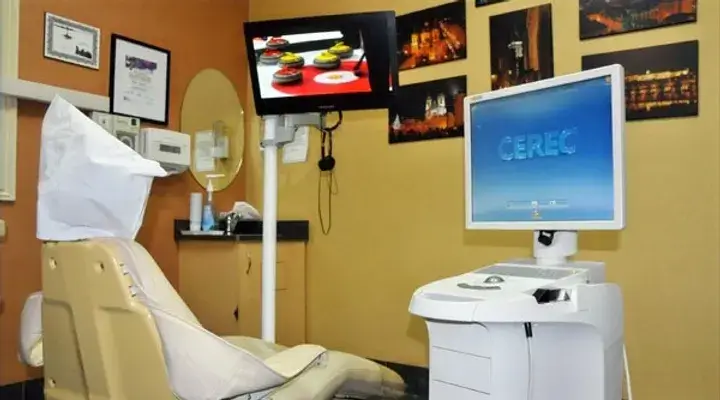
CEREC is an advanced dental restoration system that allows Dr. Inigo to restore decayed teeth, place crowns, remove defective amalgam fillings, or place cosmetic veneers in just one appointment. This allows you to have the highest quality, most realistic dental restorations in just one visit to the dentist. The state-of-the-art CEREC system was developed in 1985 at the University of Zurich Switzerland by a dentist and his electrical engineer Dr. Werner Moremann and Markus Brandisti.
How is the CEREC Procedure Performed?
- The defective filling and decay are removed. A reflective powder layer prepares the tooth for imaging.
- An optical 3D image is acquired with a small camera, directly in your mouth.
- The restoration is created on the screen using the image data.
- Diamond-coated instruments; mill a ceramic block to reproduce the design.
- This is accomplished during a single appointment using computer-aided design/computer-aided manufacture (CAD/CAM).
- After polishing the new restoration fits precisely.
- The unique light hardens the bonding material, uniting porcelain and tooth.
- Polishing or glazing ensures a pleasantly smooth and natural feel.
- The color and appearance make the special ceramic material blend with your teeth.
- Perfectly bonded porcelain ensures an extremely long life for your teeth.
- Maximum strength, great looks, natural results.
Digital Impressions
After examining the tooth and determining the best course of treatment to meet your needs, Dr. Inigo will prepare your tooth for restoration, similar to traditional treatment methods. Your prepared tooth will then be coated with a safe, tasteless powder. CEREC then uses a state-of-the-art digital 3D camera to create an optical impression. This impression replaces the physical impression traditionally used for these procedures. No more long waits while a tray of impression material hardens in your mouth!
3D Milling and Imaging
Dr. Inigo selects a ceramic block that matches the shade of the tooth being repaired. He then inserts the block into the Milling Unit. The data from the Acquisition Unit is used to direct two diamond-coated burs to carve the block into the indicated shape of the restoration. This process usually takes 8 to 18 minutes depending on the size and type of restoration. After the milling is finished, Dr. Inigo polishes the finished filling or crown and bonds it into place. With CEREC technology, Dr. Inigo can restore damaged teeth or enhance your smile with bio-compatible, tooth-colored materials in a single appointment. This technology has a track record of over 25 years, and more than 100 studies confirm the clinical excellence of the method. Ask us about CEREC today.
Digital Design and Engineering
State-of-the-art CAD software allows Dr. Inigo to design every precise detail of your restoration with the accuracy you’ve come to expect from us. The software allows us to customize the shape of the restoration to exactly fit your specific clinical needs.
Mill and Place
While you wait, exact design specifications are used in the milling machine on-site to create the restoration. About 15 minutes later, your all-ceramic color-matched restoration is then fitted, polished, and bonded for permanent placement. Your tooth is restored back to its natural form, function, and beauty.
CEREC Acquisition Unit
The CEREC Acquisition Unit is mobile and houses a medical-grade computer and the CEREC camera. Dr. Inigo uses the camera to take a digital picture of your prepared tooth. This picture is used instead of a traditional impression. This means no impression tray and material for you to gag on. The computer and CEREC 3D software will convert the digital picture to a three-dimensional virtual model of your prepared tooth. Dr. Inigo then designs your restoration right on screen using the software while you wait (and watch!). This software can assist him in designing any single tooth restoration: crowns, inlays (fillings), onlay (partial crowns), and veneers. Once Dr. Inigo has designed your restoration (usually about 5 minutes), he clicks a button, and the design data is communicated via a wireless radio signal to the CEREC Milling Unit.
CHOOSE CEREC TODAY
Single visit convenience; no temporary restoration.
No impression trays.
Beautiful aesthetics – with colour matched ceramic that is stronger than a traditional plastic white filling.
Natural-looking smile.
Clinically proven – millions of successful restorations worldwide.
Single Visit Crowns at East Credit Dental in Mississauga

Before East Credit Dental
After East Credit Dental
What are dental crowns?
Crowns are used most commonly to entirely cover or “cap” a damaged tooth or cover an implant. They are cemented to natural teeth or implants surrounding the space where the tooth once stood.
If your tooth is damaged but not lost, a crown can be used to restore its shape, appearance and function. You may need a crown if you have a root canal, a large filling in a tooth or a broken tooth.
A crown, also called a cap, is a hollow, artificial tooth used to cover a damaged or decayed tooth. The crown restores the tooth and protects it from further damage. Crowns can also be used to cover a discoloured or misshapen tooth. A tooth that has been fixed with a crown looks and works very much like a natural tooth.
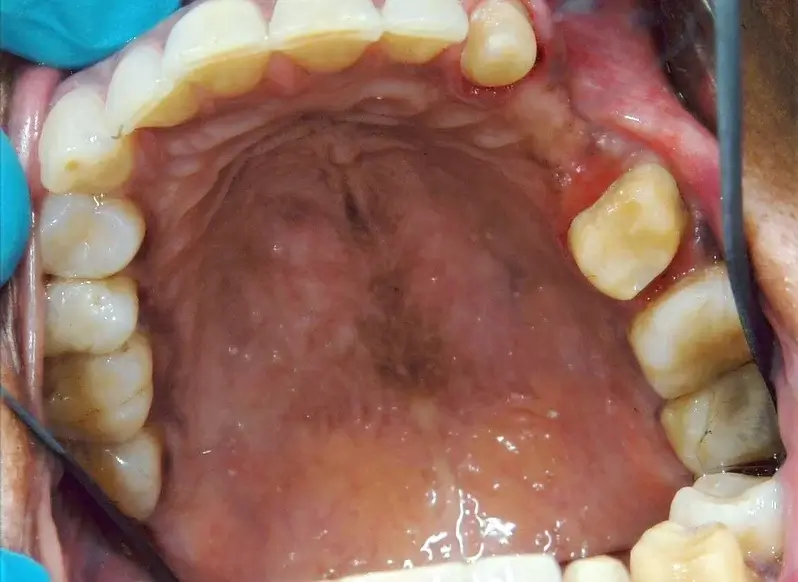
Before East Credit Dental
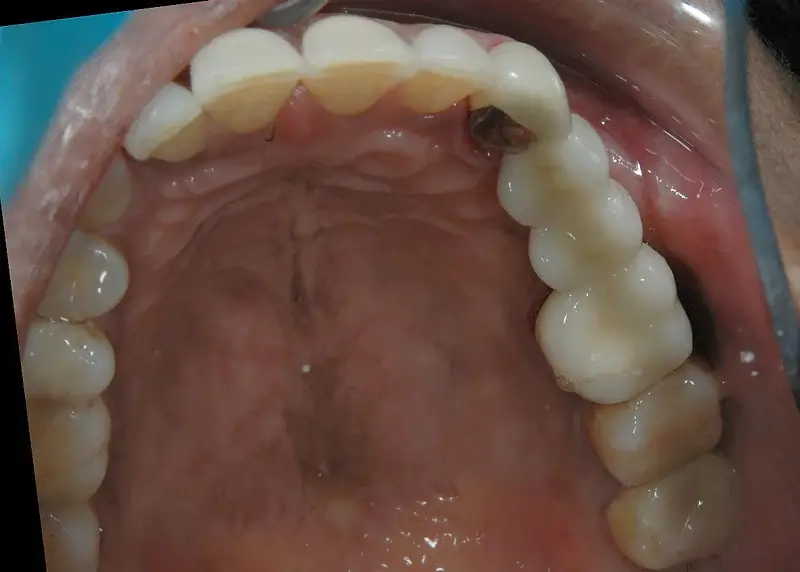
After East Credit Dental
What are dental bridges?
Bridges are commonly used to cover a space if you’re missing one or more teeth. They are cemented to natural teeth or implants surrounding the space where the tooth once stood.
What are the benefits of crowns and bridges?
In addition to strengthening a damaged tooth, bridges and crowns can be used to improve a tooth’s appearance, shape, alignment, and dental occlusion (bite). Gaps left by missing teeth can cause the remaining teeth to shift, which can result in a bad bite. Bridges and crowns help prevent this from happening.
How long do dental crowns and bridges last?
On average, dental crowns and bridges last between five and 15 years but some may last well over 20 years under the proper conditions. The life span of a crown or bridge depends on the amount of wear and tear the crown or bridge takes, how well you follow good oral hygiene practices and your personal mouth-related habits. You should avoid such habits as grinding or clenching your teeth, chewing ice, biting fingernails, and using your teeth to open packaging.
Veneers at East Credit Dental in Mississauga
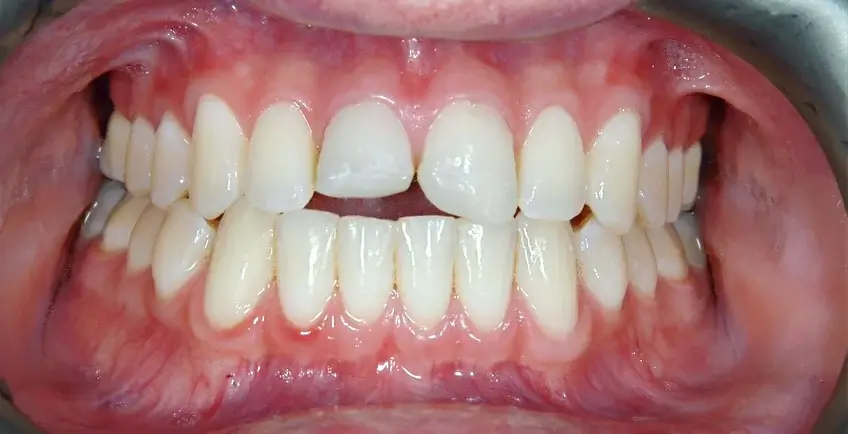
Before East Credit Dental
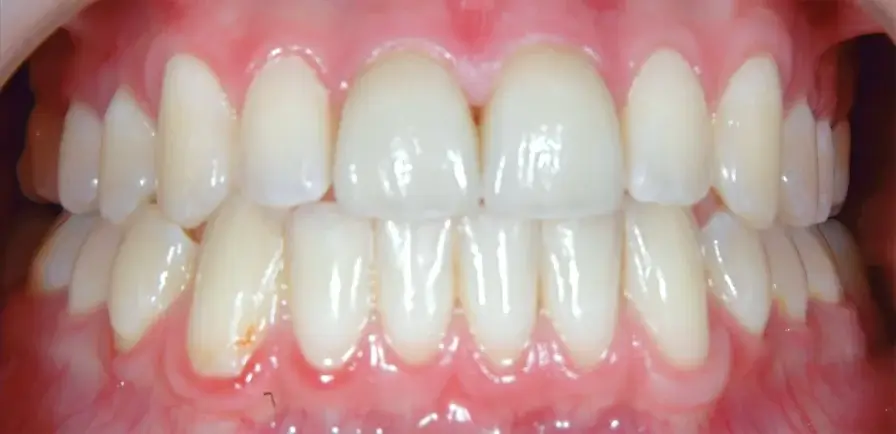
After East Credit Dental
What are Veneers?
Veneers are paper-thin custom-made coverings that conceal the front and side surface of your tooth much like a mask or an artificial fingernail. If your teeth are stained, broken, or shaped in a way that is not pleasing to you, then you may want to consider veneers to restore your smile’s beauty. Veneers are most often custom made from porcelain and fit precisely over your existing teeth and are held in place by a special light-sensitive resin that adheres to the back of the veneer to the repaired tooth. Even though the veneers are thin coverings, they are extremely strong and durable and will generally not need to be replaced for many years. While they are not suitable for every patient, veneers are a cosmetic alternative for a variety of dental conditions of the front teeth including:
- Diastemas – spaces between the teeth
- Broken or chipped teeth
- Unsightly stained or washed-out fillings
- Permanently stained or discoloured teeth
- Misshapen or crooked teeth
Placing veneers provides major changes in the teeth without the requirement of cutting them down severely. A healthy “natural” look is achieved with little or no discomfort. However, depending on the situation, crowns, bonding, bleaching, microabrasion or orthodontics may be suggested instead of veneers. A thorough dental evaluation can help Dr. Inigo assess the general health and cosmetic appearance of your teeth to determine which option is best for you.
How are Veneers Installed?
On your first visit Dr. Inigo may give you freezing (local anesthetic). Dr. Inigo then removes part of the enamel from your teeth to make room for the veneers. He will then make a mold (or impression) of your teeth. The impression is sent to a dental lab where your veneers are custom-made.
On your next visit, the veneers are attached to your teeth one by one, using composite resin cement. After that, all that is left is for you to go home and enjoy your beautiful new smile.
Regain Your Confidence!
With over 25 years of excellent service and experience, East Credit Dental is here to create your dream smile.
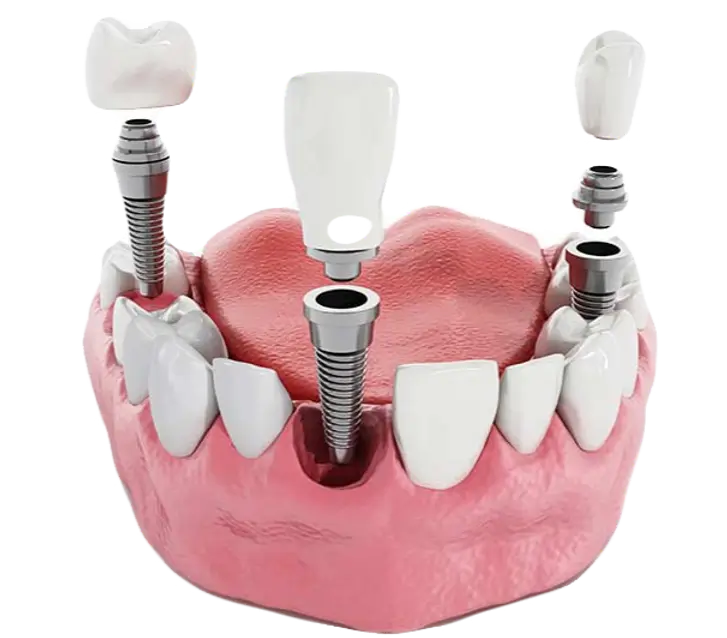
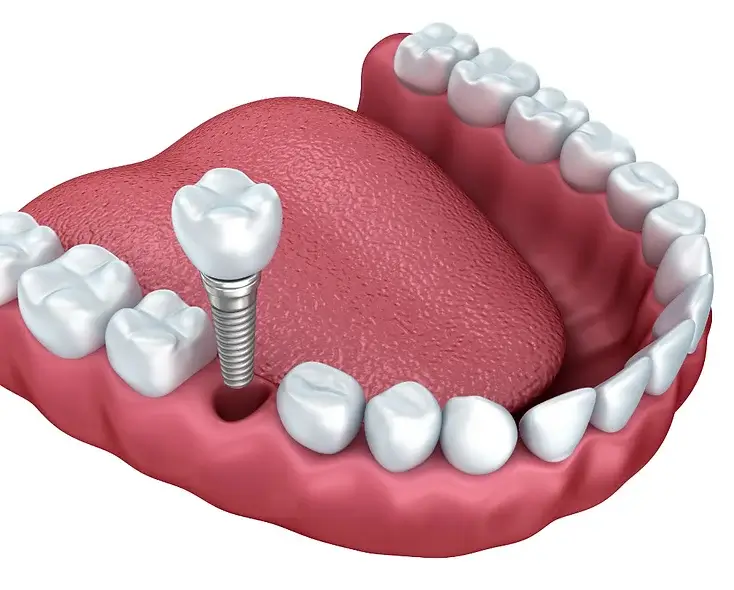
Dental Implants at East Credit Dental
Missing teeth can compromise your health, eating habits, speech, and appearance. Replacing missing teeth maintains the integrity of your facial structure and reduces the risk that the bone surrounding the previous tooth root will deteriorate or melt away.
The preferred method of tooth replacement is a dental implant. Dental implants look, feel and function like your natural teeth.
A dental implant is a small metal screw that is placed in the upper or lower jaw where natural teeth have been lost. They function like a natural tooth root.
Implants are made from titanium. This is because the living bone will bond permanently to titanium and your system will not reject your implant like other foreign bodies.
Implants can be used to:
- Replace a single tooth
- Support a bridge to replace several missing teeth
- Support a bridge when all teeth are missing
- Provide secure fixation for a removable denture
Restorations at East Credit Dental

When decay affects the integrity of the outer layer of enamel on a tooth the dentist must intervene in order to prevent the potential loss of this tooth.
The most common way to do this is to remove the infected tissue and replace it with an inorganic tooth substitute such as a resin filling.
These filings are held in place through a bonding technique that fuses the filling to the tooth. The shade of the resin filling is matched to the tooth making them virtually invisible to the naked eye.
Teeth Whitening
- Impressions will be taken in order to create custom take-home trays for your mouth.
- The shade will be determined.
- You may experience sensitivity after the procedure. To help decrease sensitivity, you can brush with Sensodyne toothpaste for two weeks prior to starting the treatment.
- Every patient’s results are different. We cannot predict how light your teeth will get. The degree of whiteness will vary from patient to patient, depending on the structure of the teeth. Natural teeth are not paperwhite.
Teeth Whitening Process at East Credit Dental in Mississauga
- Dark staining substances should be avoided, such as coffee/tea, smoking, cola, red wine, berry pie, soy sauce, red sauces, mustard, and ketchup.
- You will be given a whitening gel that you will apply a small bead in your custom tray and place on your teeth.
- Opalescence 15% 4-6hrs at night
- Opalescence 35% 30 minutes per day
- Remove any excess gel with a Q-tip. Make sure once you remove the trays that you rinse and brush your teeth. Also, brush your trays.
- If there is sensitivity, apply fluoride gel into the trays and leave it on your teeth for at least 5 minutes. Re-apply as often as needed. Brushing with Sensodyne toothpaste 2x a day will help reduce sensitivity.
- You can take Advil or Tylenol for any discomfort.
- If sensitivity persists for longer than 48 hours after completion of whitening please call the office here.
The best results occur once the cleaning has been completed and with consistent use of whitening gel, between 7-10 days. Although, you can stop at any time if you are happy with the results
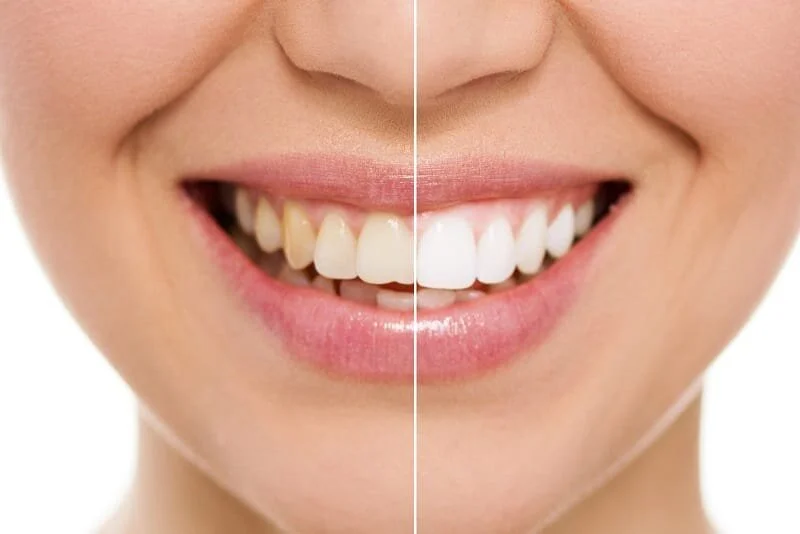
Laughing Gas
Nitrous oxide, also known as laughing gas, is a safe and effective sedative agent that is mixed with oxygen and inhaled through a small mask that fits over your nose to help you relax. This results in a calm, euphoric feeling.
Nitrous oxide can also be used to treat pain. It also functions as a mild sedative. It is not intended to put you to sleep. You will be able to hear and respond to any requests or directions the dentist may have.
Your dentist will ask you to breathe normally through your nose, and within a few short minutes, you should start to feel the effects of nitrous oxide. You may feel light-headed or a tingling in your arms and legs. Some people say their arms and legs feel heavy. Ultimately, you should feel calm and comfortable. The effects of nitrous oxide wear off soon after the mask is removed.
Talk to your dentist about whether nitrous oxide would be a good option for you.
Emergency Services
We deal with emergencies immediately and encourage you to call our office as soon as you think there is something wrong or you detect a problem.
Many times we are able to assess and service the patient with a conservative treatment on the same day. This enables us to alleviate discomfort and stabilize the situation so that it can be taken care of in the near future.
